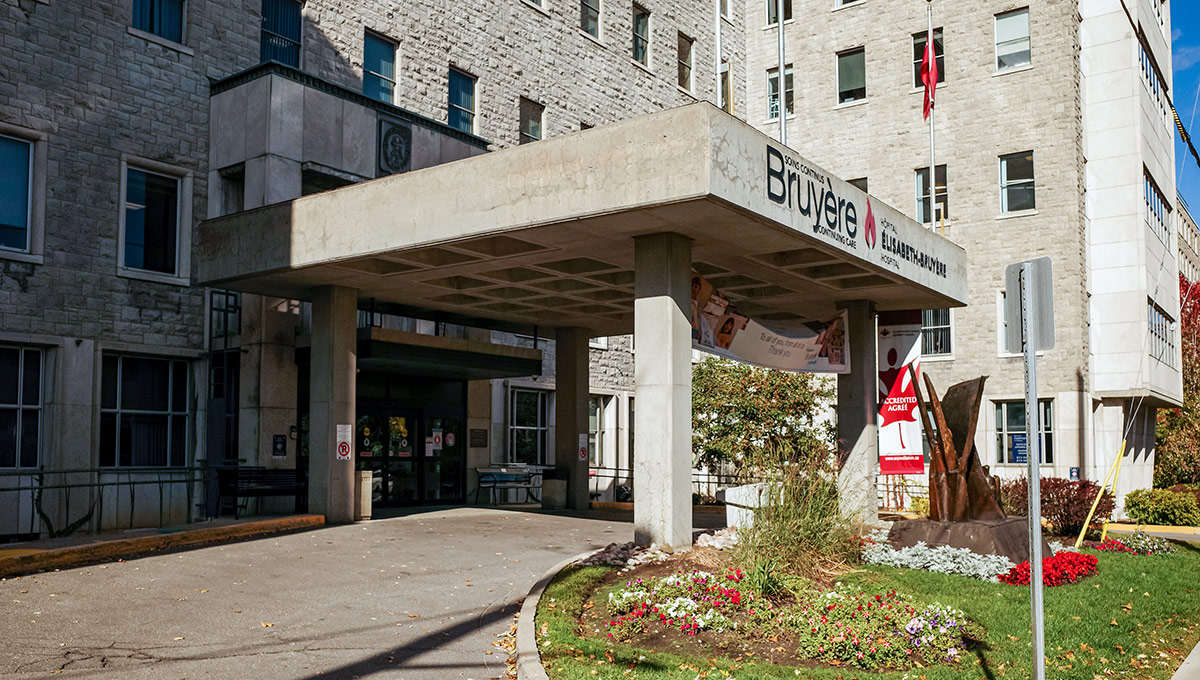By Elizabeth Howell
Carleton researcher Chantal Trudel—and a multi-institutional team made up of Susan Braedley, Amy Hsu, Dennis Kao, Frank Knoefel, Sophie Orosz, Heidi Sveistrup, and Bruce Wallace—received nearly $40,000 from the Foundation for Health Environments Research in the United States to study the design of Canadian long-term care homes (LTC) in the wake of the novel coronavirus pandemic.

Chantal Trudel
The work reflects Carleton’s research commitment to supporting pandemic efforts and strategic initiatives in health, wellness and sustainability.
The funds will be supplemented with financial commitments from Carleton and partners to design LTC work and living spaces for the protection of residents and staff. Partners include the Bruyère Research Institute and the Ontario Centres for Learning, Research and Innovation in Long-Term Care.
“Unlike hospitals, which are clinical in nature, LTC environments are residents’ homes,” says Trudel, a professor in the School of Industrial Design. She added this situation presents a challenge in designing for infection prevention and control.

Balancing Safety with Comfort
Steve Crawford, chief executive officer of McCormick Care Group in London, Ont., is working with Trudel on design studies. He shares Trudel’s concern.
“There’s a potential disconnect between making LTC safe in terms of infection prevention and control, and creating spaces that are comfortable and warm for residents and workers alike,” says Crawford.
Trudel’s previous work in neonatal care showed that aspects of our environments may actually get in the way or be “goal stoppers,” as health-care workers try to complete their tasks safely or keep spaces clean. For example, a simple process such as getting milk or formula from a fridge for an infant may require touching multiple surfaces such as the patient’s chart, a fridge door, the bottle, warming containers and faucets. Yet, sanitizing after every touch takes time that health-care workers cannot easily find, as most organizations face staffing shortages.
“I once asked a nurse about performing hand hygiene steps between these interactions,” recalls Trudel.
“She said, ‘If I had to perform hand hygiene in between each step, I would never get my job done.’ That summed up a critical problem health-care workers are experiencing—a tension between trying to be as cautious as possible, while trying to finish the variety of tasks to serve patients.”
The team’s goal is to identify and address such “goal stoppers” in LTC to prevent outbreaks, as workers do everyday tasks while wearing cumbersome personal protective equipment, such as helping residents in and out of the bathroom.
The team will also study how to assist residents who are living with dementia, which can be particularly challenging in design for infection prevention and control, according to team member Frank Knoefel from Bruyère. “It may be hard for someone living with cognitive impairment to remember to wash their hands after coming in contact with high-touch surfaces or to remember physical distancing rules.”

Infection-Resilient Design is Goal for LTC
“Through design, we may be able to eliminate unnecessary steps in workflow to reduce workload and potential risks of cross-contamination from interacting closely with others or touching different surfaces,” adds Trudel.
Normally Trudel and her team members would visit LTC homes to learn about the routines of workers and residents in their environment, but the pandemic has forced changes to protect the health of everyone. Instead, the team will begin the work remotely with at least three LTC workers per facility, at four locations, to capture a range of living and working environments. LTC workers will document their environment to share the barriers they face in supporting infection prevention and control. Trudel’s team will also review the plans of future LTC homes or those under renovation to co-create infection-prevention design strategies, which coincides with the Ontario government’s recent push to increase preparedness for LTC against COVID.
“Working closely with homes is very important,” says Trudel.
“Front-line workers know their challenges better than anyone else. So, they will bring us through a typical day and we will work with them to develop recommendations and design concepts. We plan to expand some of the principles we find to more generic infection-control protocols, to help other LTC homes as well.”
The initial phase of the study will last a year. The team will create a COVID-friendly design plan for participating LTC homes that could also be used to prevent future respiratory outbreaks. Trudel’s grant will support two master’s students, research assistance from Bruyère and one summer undergraduate internship.
“Hopefully we can keep the momentum going and create a multi-year project to build a program focused on LTC design,” says Trudel.
“Our interdisciplinary and community-based team—which includes design, engineering, health sciences, medicine, social work and LTC homes—has a wealth of experience. The students are very interested in design to support long-term care. Infection-resilient design is essential, but something that was neglected before. We want to continue working with LTC workers to make that easier in the years to come.”

Tuesday, November 3, 2020 in Industrial Design, Research
Share: Twitter, Facebook



